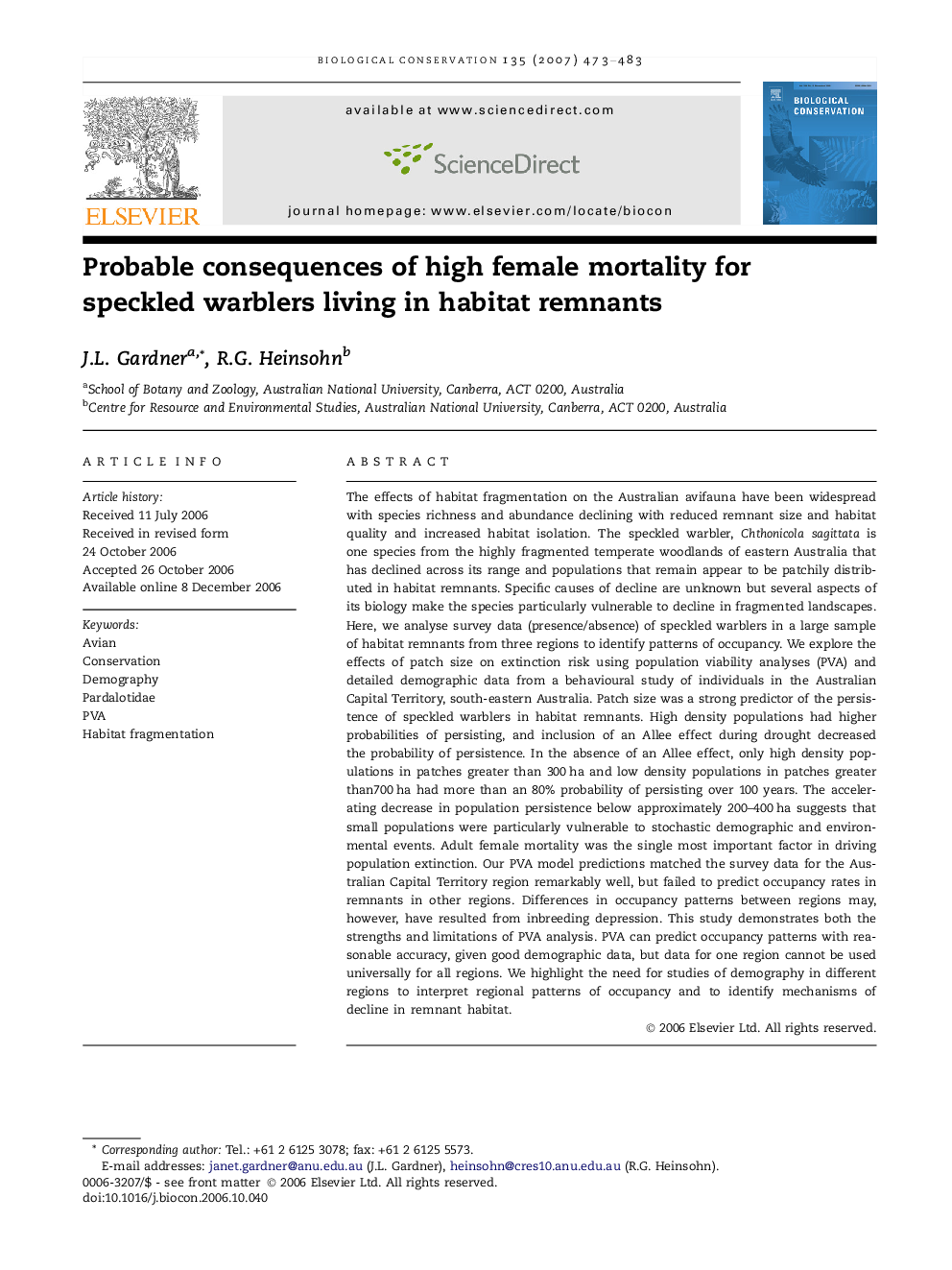| کد مقاله | کد نشریه | سال انتشار | مقاله انگلیسی | نسخه تمام متن |
|---|---|---|---|---|
| 4387275 | 1304597 | 2007 | 11 صفحه PDF | دانلود رایگان |

The effects of habitat fragmentation on the Australian avifauna have been widespread with species richness and abundance declining with reduced remnant size and habitat quality and increased habitat isolation. The speckled warbler, Chthonicola sagittata is one species from the highly fragmented temperate woodlands of eastern Australia that has declined across its range and populations that remain appear to be patchily distributed in habitat remnants. Specific causes of decline are unknown but several aspects of its biology make the species particularly vulnerable to decline in fragmented landscapes. Here, we analyse survey data (presence/absence) of speckled warblers in a large sample of habitat remnants from three regions to identify patterns of occupancy. We explore the effects of patch size on extinction risk using population viability analyses (PVA) and detailed demographic data from a behavioural study of individuals in the Australian Capital Territory, south-eastern Australia. Patch size was a strong predictor of the persistence of speckled warblers in habitat remnants. High density populations had higher probabilities of persisting, and inclusion of an Allee effect during drought decreased the probability of persistence. In the absence of an Allee effect, only high density populations in patches greater than 300 ha and low density populations in patches greater than700 ha had more than an 80% probability of persisting over 100 years. The accelerating decrease in population persistence below approximately 200–400 ha suggests that small populations were particularly vulnerable to stochastic demographic and environmental events. Adult female mortality was the single most important factor in driving population extinction. Our PVA model predictions matched the survey data for the Australian Capital Territory region remarkably well, but failed to predict occupancy rates in remnants in other regions. Differences in occupancy patterns between regions may, however, have resulted from inbreeding depression. This study demonstrates both the strengths and limitations of PVA analysis. PVA can predict occupancy patterns with reasonable accuracy, given good demographic data, but data for one region cannot be used universally for all regions. We highlight the need for studies of demography in different regions to interpret regional patterns of occupancy and to identify mechanisms of decline in remnant habitat.
Journal: Biological Conservation - Volume 135, Issue 4, April 2007, Pages 473–483